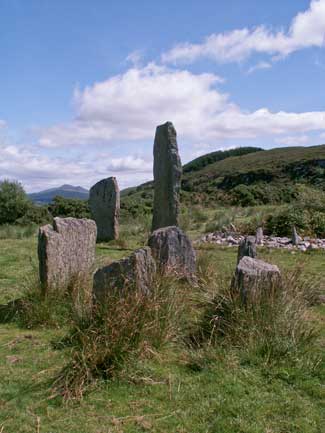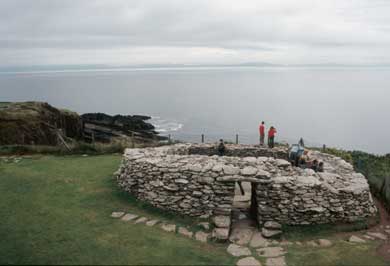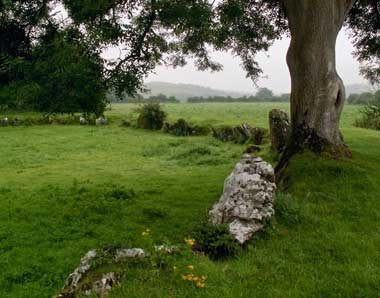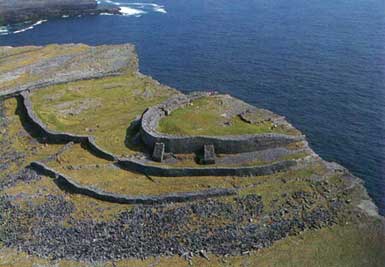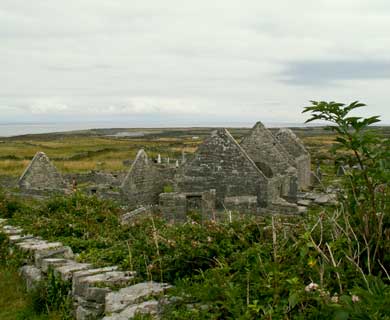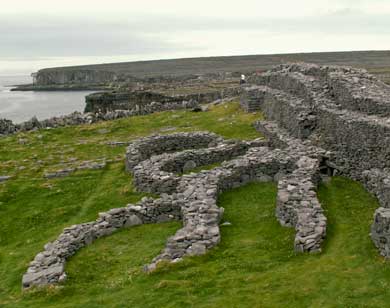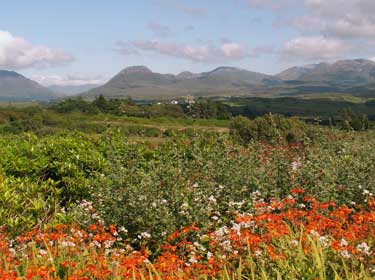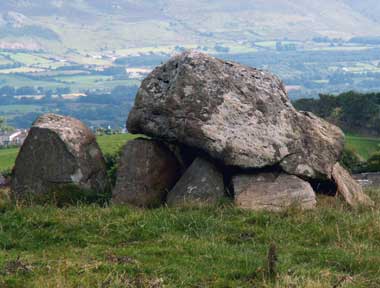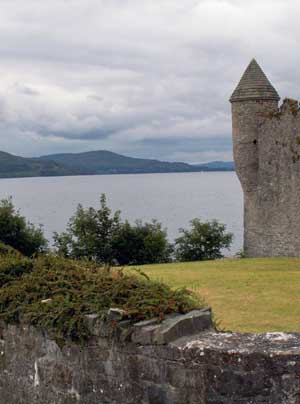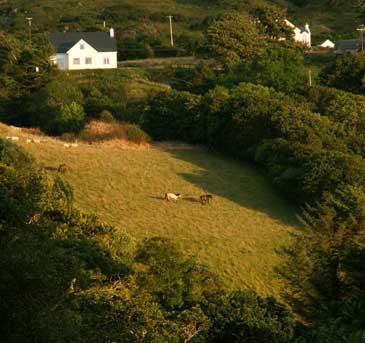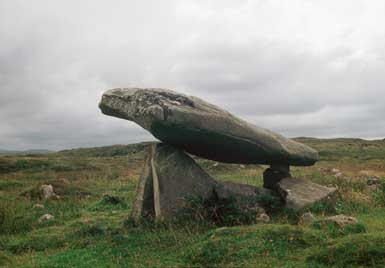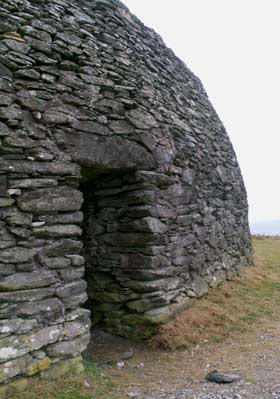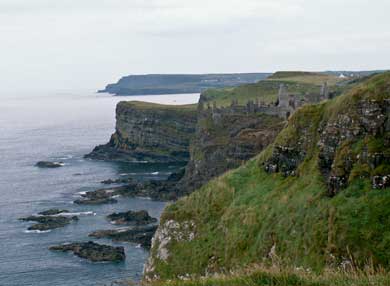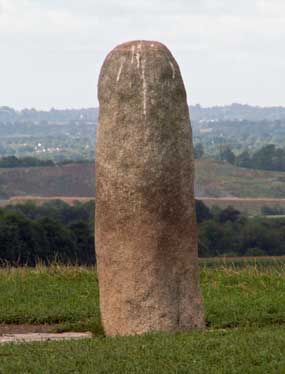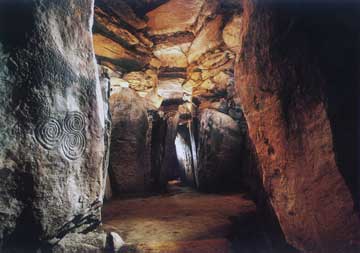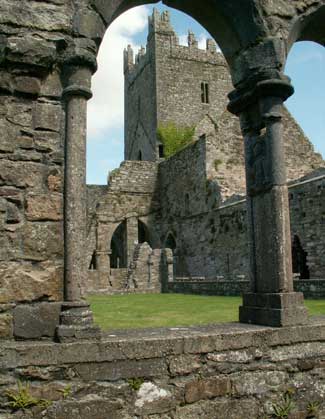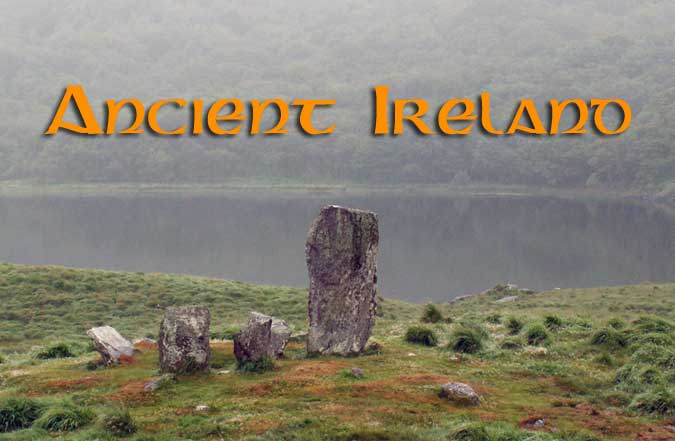
22 Days in Ireland and the Aran Islands
Land Only Price: $4455 (Cdn)

Day 1 |
Kenmare |
The group will meet at Shannon airport and we will all drive to Kenmare where we will spend the next four nights. Kenmare is ideally located for exploring County Kerry and the rest of the province of Munster.
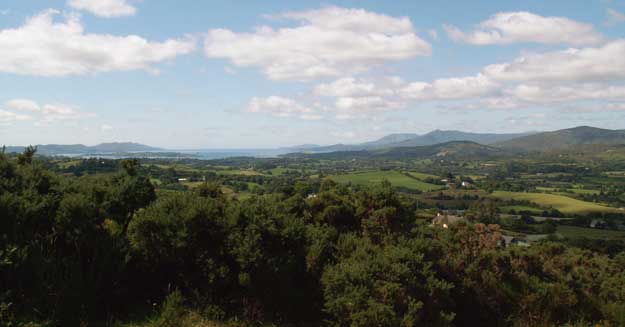
Bantry Bay
Day 2 |
Kenmare |
As far as prehistoric remains are concerned, Munster is particularly noted for its Stone Circles—there is one, known as the Druid’s Circle, in the town of Kenmare itself. One of the largest and finest examples is at Drumbeg on the coast of County Cork and we will drive out in the morning to visit it. On the way, we will stop to visit a number of other circles, including the ones at Uragh on the Béara Peninsula and Kealkill overlooking Bantry Bay.
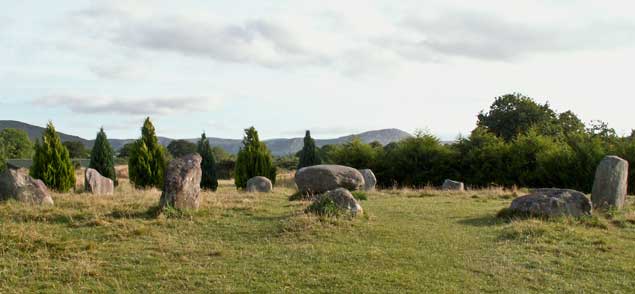
The Druid's Circle in Kenmare
Day 3 |
Kenmare |
Most of the day will be taken up driving around the Ring of Kerry, which follows the coastline around the Iveragh peninsula. The scenery is outstanding and there are a number of monuments to visit including Staigue Fort, an Iron Age cashel or ‘ring fort.’ We will also spend some time exploring some of the villages along the way such as Caherdaniel, which has an ‘ogham stone’ (inscribed with the earliest form of Irish writing), and Cahersiveen.
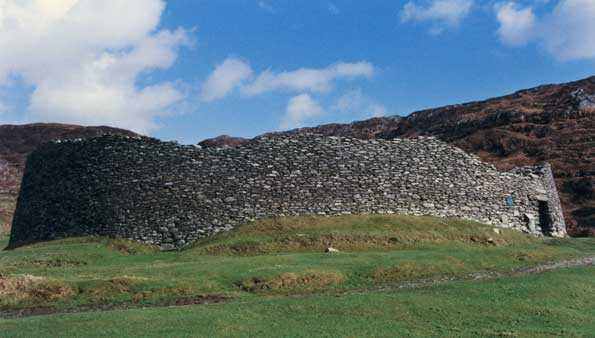
Staigue Fort
Day 4 |
Kenmare |
The Dingle Peninsula is another part of County Kerry noted for its scenery— which was exploited to great effect by David Lean in the film Ryan’s Daughter. It also has a rich archaeological heritage. Of special note are a number of cliff forts dating to the early centuries A.D. The drive around the Dingle will take the better part of the day, travelling at a sedate pace with ample time to stop and explore.
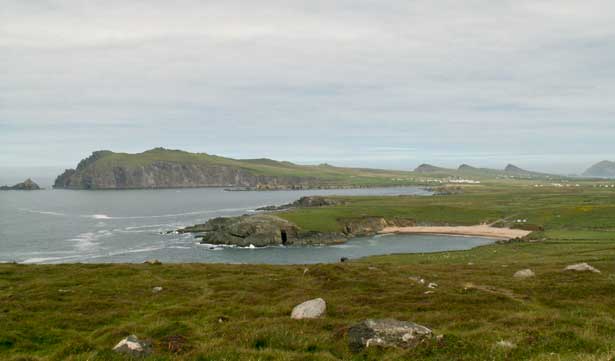
The Dingle Peninsula. Clogher Head
Day 5 |
Adare |
Today we will drive north to Adare in County Limerick. The village, with its thatched roof Tudor cottages, beautiful gardens and ivy clad medieval churches, is one of the most charming in Ireland. Nearby there is a complex of prehistoric sites surrounding Lough Gur, including a number of large stone circles and various Neolithic tombs, that we will also visit during our stay.
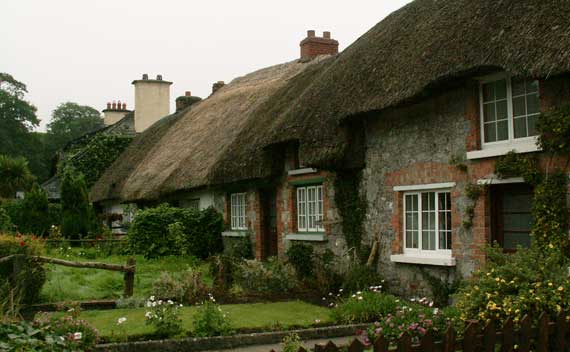
Adare
Day 6 |
Inishmore |
From Adare, we will head north through Counties Clare and Galway driving through the Burren, a vast area of limestone slabs estimated to be over 300 million years old. It shelters alpine, Mediterranean and Arctic plants and was home to human settlers as early as 2500 BC. The landscape is scattered with the remains of prehistoric settlements and tombs, of which the most famous is Poulnabrone Dolmen. At Rossaveel we will take the afternoon ferry to Inishmore, largest of the Aran Islands, where we will spend the next three nights.
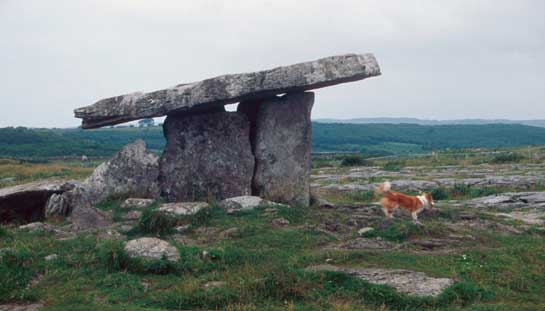
Poulnabrone Dolmen
Day 7 |
Inishmore |
On Inishmore, we will visit some of the best examples of Iron Age ring forts in Ireland. Dun Aengus is the largest and most spectacular, located on a precipitous cliff. After lunch, we will continue our exploration of the island with a visit to the ruins of the medieval monastic community now known as the Seven Churches. While we are on Inishmore, transportation will be by means of local minibuses, bicycle or by foot—it all depends on the weather.
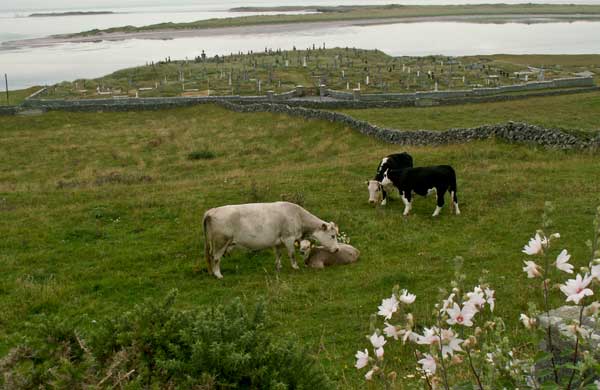
Inishmore, Aran Islands
Day 8 |
Inishmore |
In the morning, we will stroll up to the impressive cliff fort at Dún Dúchathair (known as the Black Fort). The fort is wonderfully preserved and the walk along the cliffs is spectacular. There is another impressive fort, Dun Eochla, nearby which is well worth a visit. While on the island you will have the opportunity to visit the Ionad Arann, Aran’s Heritage Centre, where you can study exhibits on the history and culture of the islands.
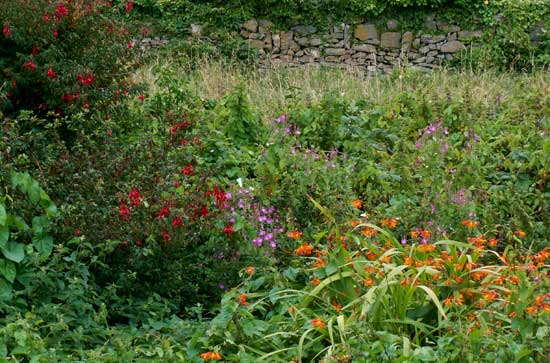
Flowers beside the Road. Inishmore
Day 9 |
Westport |
In the morning we will return to the mainland and drive up to Westport for the night. The drive will take us through the lovely Connemara region, passing by the mountains known as the Twelve Pins, through Clifden and through the Connemara National Park. Westport is a charming resort town designed by the Georgian architect William Wyatt and The Mall is one of Ireland’s most attractive streets.
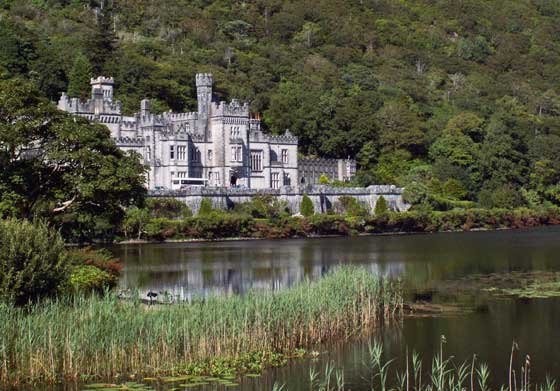
Kylemore Abbey, Co. Galway
Day 10 |
Sligo |
Leaving Westport in the morning, we will drive north to Sligo, which is situated in an area of tremendous archaeological wealth. In the afternoon, we will investigate the area of Carrowmore, which is considered to have the greatest concentration of megalithic tombs and monuments in Europe. Some 60 tombs have been located and there is a visitor centre with an audiovisual display and guided tours.
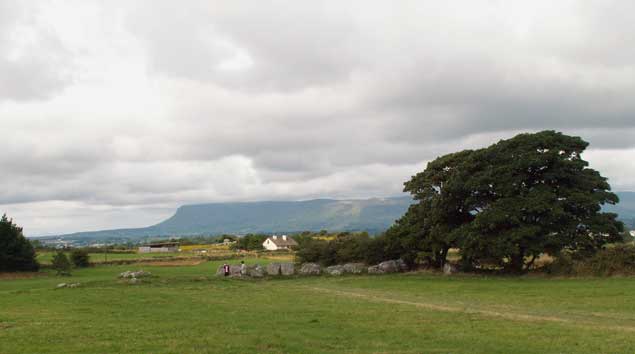
Carrowmore. Stone Circle
Day 11 |
Sligo |
Overlooking Lough Arrow a few miles south of Sligo is another impressive Neolithic cemetery at Carrowkeel. This area consists of 14 cairns, various dolmens and scattered remnants of other graves scattered across the slopes of a long ridge, all dating from the Neolithic Period between 3000 and 2000 B.C. The afternoon will be free to explore the town of Sligo itself whose attractions include a fine abbey and the county Museum.
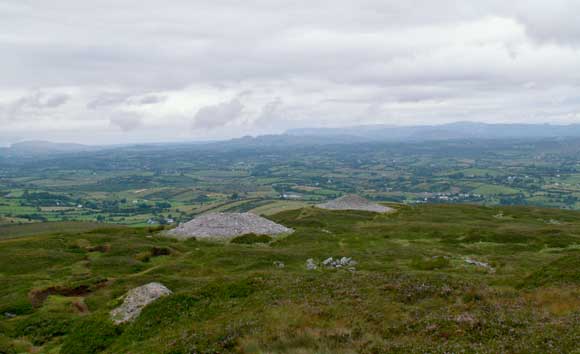
Carrowkeel Neolithic Cemetery
Day 12 |
Sligo |
On Wednesday, we will investigate the area around Lough Gill. First we will climb up to see the spectacular Neolithic court tomb at Deerpark. Then we can look at some of the countryside around the lough which was such a source of inspiration for the poet W.B. Yeats. Among its attractions are the Rock of Dooney (The Fiddler of Dooney), Slish Wood (The Stolen Child), and Inishfree (The Lake Isle of Inishfree).
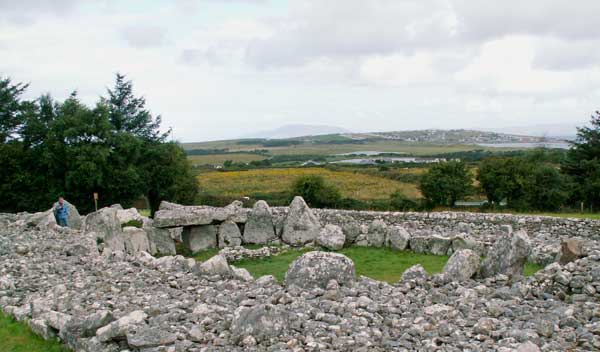
Creevykeel Court Cairn
Day 13 |
Ardara |
Just north of Sligo before crossing the border into County Donegal, we will stop to visit Creevykeel Court Tomb. This is a well-preserved court tomb constructed c. 2500 B.C., with a wide, high front end in the east, tapering away to a narrow end in the west, with a open central area. After lunch and some time to explore the town of Donegal itself, we will head north to Ardara where we will spend the next three nights. Ardara is the centre of tweed industry in Ireland and is noted for its pubs and music.
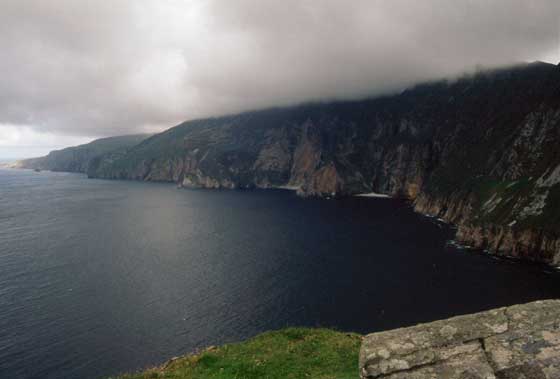
Slieve League Cliffs
Day 14 |
Ardara |
Today we will drive down to the fishing port of Killybegs and then along the coast to Teelin for a view (and a walk along) the Slieve League Cliffs. From there, we will proceed to Malin Beg where there are beehive huts and a cashel and then to the valley of Glencolumbkille, site of an annual pilgrimage that dates back to the earliest days of Christianity in Ireland.
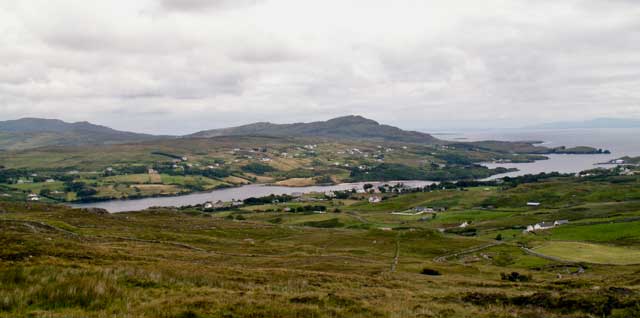
Glencolumbkille
Day 15 |
Ardara |
Just north of Ardara is the Kilclooney Dolmen, one of the best preserved in the country. After visiting the site, we will head to Rossbeg on the Atlantic coast. Along the way we will stop to examine the remains of Drumboghill Cashel, which is located on a small island in the middle of Doon Lough. We will return to Ardara early in the afternoon to visit the Heritage Centre, which is dedicated to the local weaving industry.
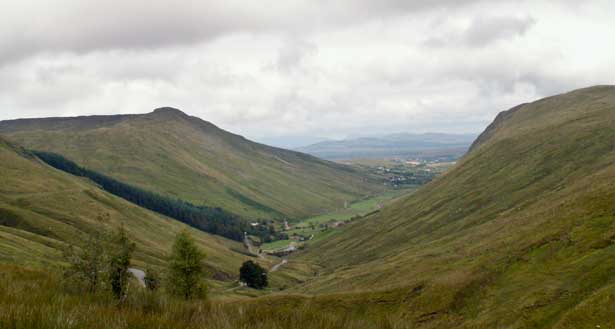
Crocknamurrin
Day 16 |
Coleraine |
We will drive from Ardara to Coleraine in Northern Ireland, stopping at Grianan Aileach on the way. Located in the vicinity west of Londonderry in County Donegal, Grianan of Aileach is an ancient fort set on 700-foot Greenan Hill, with views over Loughs Foyle and Swilly. The entire enclosure covers 4 acres. Its name means ‘sun palace’, as some people thought that it had been built as a Druid Sun Temple.
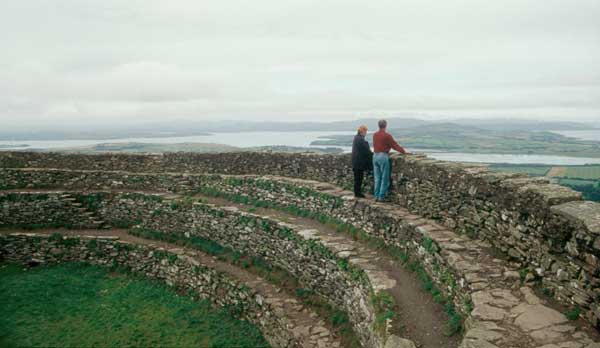
Grianan Aileach
Day 17 |
Armagh |
We will drive from Coleraine to Armagh. On the way we will veer west to see Beaghmore Stone Circles in County Tyrone. This complex set of Bronze Age religious and funerary monuments overlying Neolithic occupation layers was covered by peat and preserved until excavations began in 1945. We will also visit Navan Fort, the principal archaeological site in Ulster. The hill was the site of homes and a huge temple during both the Bronze and Iron ages. We will spend the night in Armagh, which claims to be one of Ireland's oldest settlements. It was sacked by the Vikings a record 10 times!
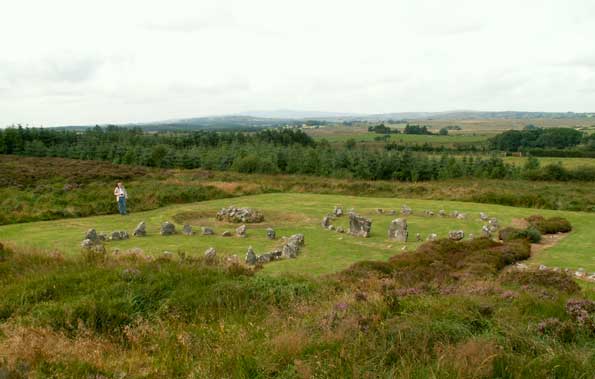
Beaghmore Stone Circles
Day 18 |
Dublin/Malahide |
We will drive from Armagh, visiting the site of the Hill of Tara, the royal seat of the High Kings of Ireland. The site consists of a large earthen eenclosure surrounded by smaller earthworks and tombs. Within the main enclosure are a pair of smaller ones—the Royal Seat and the House of Cormac. On a mound at the centre of the latter stands the Lia Fáil, the “stone of destiny” an ancient fertility pillar and inauguration stone of the High Kings. We will then proceed to Malahide on the coast just north of Dublin where we will spend the next four nights.

Trim Castle
Day 19 |
Dublin/Malahide |
We will spend the day visiting the Boyne Valley sites of Newgrange, Knowth and Dowth. The great burial mound of Newgrange is one of the most impressive prehistoric monuments in Europe and is a World Heritage site. In form it is like a typical passage grave: a long tunnel under the mound leads to a high domed burial chamber that has three recesses leading off it arranged like clover leaves, but is distinguished by its immense size and the massive construction of the corbelled roof of the burial chamber.
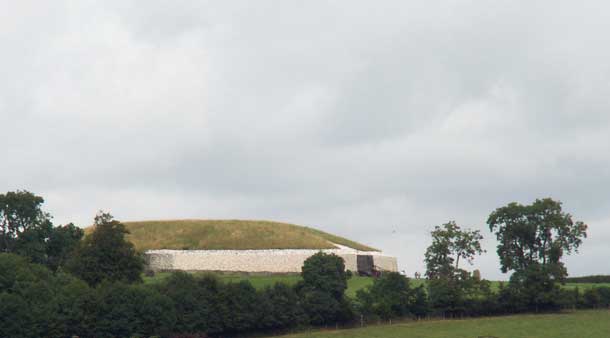
Newgrange
Day 20 |
Dublin/Malahide |
Today we will drive south to Glendalough which is a monastic settlement founded by St. Kevin in the 6th century and flourished here for over 600 years, surviving many Viking attacks before being burned and abandoned in 1398. Buildings include a round tower, St Kevin’s Cross, a roofless medieval cathedral, a 12th century monastic cemetery, and a tiny priest’s house.
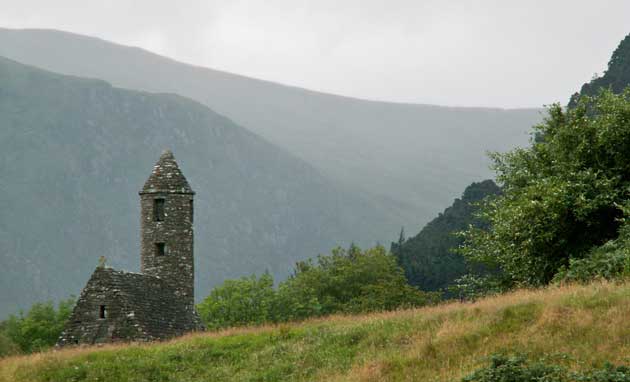
Glendalough
Day 21 |
Dublin/Malahide |
We will have a day trip to Dublin, 15 minutes by train, to see the archaeological collections in the National Museum of Ireland in the morning. You will have the afternoon to explore on your own Trinity College and the Book of Kells exhibit, the Guinness brewery, St. Patrick’s Cathedral and the Temple Bar District, famous for its pubs and eateries.
Day 22 |
End of Tour.
Note:
The price of the trip includes:
hotel taxes
accommodation based on double occupancy
overland transportation via mini bus & ferry
all visits and sightseeing as per itinerary
the service of your tour conductor, William Rowbotham or Margaret Morden
The price of the trip does NOT include:
gratuities for individual services
meals, apart from hotel breakfasts
all items and expenses of a purely personal nature
travel to and from Ireland
10.02.2012

